Elvis Presley – In the ghetto (1969) – guitar TABS (Mac Davis) sheet music
This song is about poverty, describing a child who can’t overcome his surroundings and turns to crime, which leads to his death. It was the first song Elvis recorded with a socially conscious message. He was reluctant to do it for that reason, but knew it would be a hit.

This was written by Mac Davis, who entered the Songwriter’s Hall Of Fame in 2006. At the ceremony, Davis explained: “It’s a simple matter of growing up with a little boy whose father worked with my father. He lived in a part of town that was a dirt-street ghetto. I grew up in Lubbock, Texas, and it was a ghetto in ever since of the word, but we didn’t use that word back then.
I was trying to come up with a song called ‘The Vicious Circle,’ how a child is born, he has no father, and the same thing happens. The word ‘Ghetto’ became popular in the late ’60s to describe the poor parts of town. A friend of mine, Freddy Weller, who used to play guitar for Paul Revere And The Raiders, showed me lick on the guitar one day. I went home and fiddled around with it, I wrote the song and called him up at 4 in the morning and sang it to him. He knew I’d written a hit with his lick, but that’s the way it goes.”
Please, subscribe to our Library.
If you are already a subscriber, please, check our NEW SCORES’ page every month for new sheet music. THANK YOU!
Davis had written some songs for Elvis that were used in his movies, including “A Little Less Conversation” and “Clean Up Your Own Backyard.” When Elvis was making his comeback and recording in Memphis, his management asked Davis if he had anything they could use. Davis sent them a tape with this and “Don’t Cry Daddy,” as the first two songs, and Elvis recorded both of them.
In a Songfacts interview with Mac Davis, he told the story: “When they decided to do the album In Memphis at American Music, with Chips Moman, they came to me because we’d had a little bit of success. ‘Memories’ was also a Top 10 record, and according to Priscilla, Elvis liked my writing.
He wanted to hear more of my stuff, so they asked me to send in some songs for this Memphis album. I had 19 songs. I had done a tape of them, just me and my guitar, and I sent them the whole tape of everything I had, and the first song on the tape was ‘In The Ghetto.’ I had just finished writing it. And the second song was ‘Don’t Cry Daddy.’ They recorded both of them.
It was a big brouhaha of him recording ‘In the Ghetto.’ I think he had to fight to get that out as a single. RCA was afraid of it and Col. Parker was afraid of it, but Elvis believed in it and he wanted to be taken seriously. He wanted to do a song that said something.
It was one of my prideful moments, one of my most exciting moments, because I didn’t know if anyone would ever cut that song. It was controversial at the time.”
In America, this was Elvis’ first Top 10 hit in four years (“Crying In The Chapel” also hit #3 in 1965). If Elvis turned this down, the song would have gone to Rosie Grier, a minister and former football player.
Memphis was Elvis’ hometown. It was the first time he recorded there since 1956. This was the first release from those sessions.
In 2007, Elvis’ daughter Lisa Marie Presley recorded tracks that were composited with Elvis’ original version to create a duet with this song – similar to what Natalie Cole did with her father’s song “Unforgettable.” Some proceeds from the sale of the song went to benefit victims of Hurricane Katrina.
As part of a series of re-releases of Elvis songs in the UK in 2007, this re-entered the UK chart at #15.
Elvis’ friend Marty Lacker urged him to record in Memphis and connected him with producer Chips Moman.
“Elvis was hesitant to do ‘In The Ghetto,’” Lacker told Goldmine magazine. ‘Colonel Parker had always drilled into his head, ‘Don’t do message songs. If you do message song, it’s just like taking a political side. Whatever side you’re gonna take is gonna offend the others’. I was in the control room after Elvis and the musicians had been working on ‘In The Ghetto’ a bit.
He said, ‘Look, I don’t think I should do this song’. I said, ‘Elvis, if you’re ever gonna do a song like this, this is the one’. He looked over at Chips and Chips said, ‘This is a hit record. But I’ll tell you what, if you don’t want it, can I have the song?’ Elvis didn’t blink. He said, ‘No, I’m gonna do it.’
One of the backup singers on this track was Donna Jean Thatcher, who a few years later married Keith Godchaux and became the only female member of the Grateful Dead. She and the other backup singers – Jeanie Greene and the sisters Mary and Ginger Holiday – got their start in Muscle Shoals, Alabama, working on sessions for the likes of Percy Sledge and Ray Stevens.
Dolly Parton, Elvis’ labelmate at RCA, recorded a version for her fourth solo album, My Blue Ridge Mountain Boy. It peaked at #50 on the Country chart.
Elvis Presley – a short biography
Almost everyone knows that Elvis Presley was a famous singer, but many
people don’t fully understand what he contributed to popular music to earn his widespread fame. Elvis combined different types of music to form a style called rockabilly, which became one of the key sounds in rock ’n’ roll. To form this musical style, he fused the country-western music of the South with the rhythm and blues of African Americans and the pop music that dominated the radio and recording industries.
The combination of musical genres and sounds into a new style of music
was Elvis’s true gift and his contribution to popular culture. That this integration of musical styles took place just prior to the civil rights movement, prefiguring social integration, makes this moment in pop culture history seem momentous.
Elvis wasn’t the first to sing in a rock ’n’ roll style, so he can’t be credited
with inventing it. But, his version of this new music became widely popular
during the mid-1950s. He spread rock ’n’ roll music across the country,
making it popular to a wide audience, especially teenagers. In that regard,
he was a true innovator.
Elvis also yielded a strong influence on youth culture. During the 1950s, teenagers had begun to think of themselves as being different from their parents’ generation. Because of the economic prosperity of the period, teens enjoyed a disposable income that they could spend on themselves instead of contributing toward family survival.
With that money they dressed themselves in fashions marketed to their age group, went to movies that featured stars of their generation, and listened to music that appealed to them.
So it wasn’t a surprise when Presley’s rock ’n’ roll music, his hairstyle, and his fashion sense became a part of this new culture for teenagers.
Later in his career, Presley changed his musical style and his personal look
to keep up with the times and gain popularity among older audiences. He
became a movie star during the 1960s and then returned to live musical
performances during the 1970s. Because his career went through so many
changes, he was popular with different types of people for different reasons.
Even after his death, his popularity remains strong among a wide variety of
people. This wide popularity, as well as his important role in American musical history, makes him a cultural icon.
The Roots
On January 8, 1935, in Tupelo, Mississippi, Elvis Aron Presley was born a half hour after his stillborn twin brother, Jesse Garon. Thus, the occasion was a mixed blessing to parents, Vernon and Gladys Presley, who lived in a two room shotgun shack on the wrong side of the tracks in Tupelo. A true son of the South, Elvis never ventured far from his roots, physically or musically.
While a young boy in Tupelo, Elvis learned to play the guitar from relatives, and then he fell under the influence of country-western singer Mississippi Slim.
It wasn’t until his family moved to Memphis that Elvis’s real musical education began. The diversity of music on Memphis’s radio stations exposed Elvis to a variety of genres, which eventually influenced his music. Several radio stations played country music, and big band music was broadcast from the famed Peabody Hotel.
Rhythm-and-blues artists could be heard on two different radio stations: WDIA and WHBQ. WDIA was owned by two white men, but it was mostly staffed by black disc jockeys who played the locally produced records of hometown bluesmen. WHBQ played a variety of music, but it’s best remembered for disc jockey Dewey Phillips’s Red Hot and Blue program that showcased the recordings of black artists.
Memphis also developed into the center for white gospel music during the
1950s, so the four-part harmonies of the gospel quartets who regularly visited the city became another influence on the teenage Elvis. He and his parents, and later he and his girlfriend, regularly attended the all-night gospel sings at Ellis Auditorium. In addition, the city’s Beale Street district was home to the clubs and joints where African American musicians played blues and rhythm and blues.
Elvis became familiar with the music of the well-known local R&B artists, including B.B. King, Rufus Thomas, and Big Memphis Ma Rainey. All these Southern-based musical genres inspired Elvis’s early singing style, which turned out to be a true fusion of sounds.
A First Recording
Sam Phillips, owner of Sun Studio and a small Memphis-based record company also called Sun, recorded the music of blues and R&B musicians. He was quoted in local papers as saying, “If I could find a white man who could sing with the sound and feel of a black man, I could make a billion dollars.”
Little did he know that Elvis would soon walk right through his doorway.
Elvis’s ability to integrate Southern musical genres into a blend of beat and
rhythm was exactly what Phillips was looking for.
However, it took some time before the two walked into the studio together and made history with Elvis’s first recording, “That’s All Right,” which was an old blues tune originally written and recorded by Arthur “Big Boy” Crudup. Elvis’s interpretation of the song featured a relaxed vocal style, upbeat tempo, and a driving rhythm as well as these two elements that would make his sound famous:
✓ Syncopated lyrics using a hiccupping sound
✓ Reverberation for an echo effect
Elvis’s sound became the essence of rockabilly, though no one called it by
that name at the time. A few days after his first recording, Elvis and the two musicians who backed him up — guitarist Scotty Moore and bass player Bill Black — recorded the bluegrass classic “Blue Moon of Kentucky” as the flip side to “That’s All Right,” giving Elvis his first single.
Sam Phillips took this first record to disc jockey Dewey Phillips (no relation to Sam) to play on his Red Hot and Blue radio program, as well as to other deejays at other stations. By the end of the month, “That’s All Right” was shooting up the local charts, and Elvis made his first major public appearance at the Overton Park Shell.
Gaining Fans across America
From the summer of 1954 to the end of 1955, Elvis and his band, who called themselves the Hillbilly Cat and the Blue Moon Boys, enjoyed success as a Southern-based country-western act. Even though their music sounded decidedly different from typical country music, their status as white Southern singers classified them and their music as “country.”
They cut four more singles for Sun Studio and toured across the South on the same bill as such well-known country acts as Mother Maybelle and the Carter Sisters, Hank Snow, Faron Young, and Ferlin Husky.
Elvis’s singing style wasn’t the only unique feature of his high-powered act.
As he crisscrossed the South, his performing style evolved to become a
unique, highly energetic part of an Elvis Presley performance. Dressed in
outrageously colorful clothes — such as those worn by R&B artists down on Beale Street — Elvis moved throughout his entire act, bouncing on the balls of his feet, shaking his legs, and swiveling his hips.
In addition, bass player Bill Black, something of a comedian, danced and rolled around on the floor with his huge bass fiddle. The trio’s frenzied performances were considered by some venues to be too wild, and other country performers hated to follow their act, but their weekly appearances on the Louisiana Hayride radio program brought them wide exposure across the South and a loud, raucous, and youthful fan base.
In The Nashville Sound: Bright Lights and Country Music by Paul Hemphill, country singer Bob Luman recalls seeing Elvis when Luman was still a teenager in Kilgore, Texas: “This cat came out in red pants and a green coat and a pink shirt and socks, and he had this sneer on his face and he stood behind the mike for five minutes, I’ll bet, before he made a move. Then he hit his guitar a lick, and he broke two strings. Hell, I’d been playing for ten years, and I hadn’t broken a total of two strings.
So there he was, these two strings dangling, and he hadn’t done anything except break guitar strings yet, and these high school girls were screaming and fainting and running up to the stage, and then he started to move his hips real slow like he had a thing for his guitar . . . .”
The antics of the fans, especially the girls, drew the attention of country
promoter Colonel Tom Parker (also known as simply “the Colonel”), who
believed the strange-looking kid with the big moves could be a national success.
Two weeks after Elvis’s first RCA recording session, he appeared for the first time on television as a guest on Tommy and Jimmy Dorsey’s weekly variety series Stage Show. Compared to the more conventional acts on the show — such as pop singers, dancers, and comedians who dressed, performed, and acted like the singers, dancers, and comedians on other variety shows — Elvis looked strange, alien, even dangerous. If you tuned in to the Stage Show and saw Elvis performing, the following might have shocked you, as it did many in the television audience:
✓ His ducktail haircut, which was long and slicked back
✓ His shiny Beale Street suit, which featured wide-legged trousers that
shook when he moved
✓ Eye makeup on his eyelids and under his lashes that must have startled
even show business veterans who had seen it all
✓ His high-energy performance in which he shook, shimmied, and swiveled, causing screams and squeals from the studio audience
During the next eight weeks, he appeared five more times on the program
with ever-increasing ratings (though Stage Show never beat its competition
on NBC, The Perry Como Show).
Elvis, the Actor
Elvis made four movies between 1956 and 1958: Love Me Tender, Loving You, Jailhouse Rock, and King Creole. The first, a Civil War–era western, featured Elvis as the youngest son of a family of homesteaders. The other three films starred Elvis in dramatic stories about young singers with new sounds who are misunderstood by the press and public.
Clearly echoing Elvis’s own career and life story, these films helped reshape
the singer’s image in the eyes of the public, softening the criticism aimed
against him and presenting him as just another show business success story. Wallis produced Loving You and King Creole, while Pandro S. Berman produced Jailhouse Rock.
In The Army
Elvis was drafted in late 1957 at the age of 22, but he managed to postpone his service in the army until March 1958 because of his contractual obligations to finish King Creole.
While Elvis was in the army, two events in his personal life occurred that
made a permanent impact on his life. In August 1958, near the beginning of his tour of duty, Elvis’s mother, Gladys, died unexpectedly. With her death, he lost his biggest supporter. Then in early 1960, near the end of his tour of duty, Elvis met 14-year-old Priscilla Beaulieu, whose stepfather was also a soldier in the service. The two began a relationship that would continue in the 1960s when Priscilla moved to Memphis at Elvis’s suggestion, eventually leading to marriage in 1967.
Elvis, the Hollywood Star
A few weeks after his discharge from the army, an eager Elvis returned to
Hollywood to begin shooting G.I. Blues, a story about a singer who’s serving in the army in Germany. Producer Hal Wallis borrowed details from Presley’s life to flesh out the script just as he had done in the pre-army movies.
However, unlike Elvis’s earlier movies, G.I. Blues is a musical comedy, not a musical drama. Aimed at a family audience, the film presents the new, more mature Elvis Presley.
G.I. Blues was enormously successful; it ranked 14th in box office sales. The soundtrack album reached number one, remaining on the charts
longer than any other Presley album. Sadly, Elvis didn’t share the fans’ enthusiasm for G.I. Blues. He felt the movie had too many musical numbers, and he believed that some of them made little sense in the context of the plot. He also was concerned that the quality of many of the songs fell short of the music from his earlier films.
After the disappointing dramas, Elvis returned to musical comedies with Blue Hawaii, which was his second most financially successful movie. The movie, directed by Norman Taurog, featured a huge cast of colorful characters who could handle comedy.
In response to his fans’ cries for more songs, Blue Hawaii also contains 14 musical numbers, including the title song and one of Elvis’s biggest hits “Can’t Help Falling in Love.” The songs represent a range of types and styles, from pop-rock (“Rock-a-Hula Baby”) to novelty tunes (“Ito Eats”) to ballads (“Can’t Help Falling in Love”).
After Blue Hawaii, Presley made 23 more movies, most following the pattern established in this breezy musical comedy. Later, Elvis would bitterly refer to these formulaic films as the Presley Travelogues. Despite his distaste for them, most of Elvis’s films were popular successes and highly profitable.
At one point in the mid-1960s, Elvis became the highest-paid actor in Hollywood. Even though he failed to become a serious actor, Elvis Presley was an extremely successful movie star.
’68 Comeback Special
The year 1968 marked a turning point for Elvis professionally and personally. The change began in January when RCA released the single of “Guitar Man.” The song didn’t chart very high, but it was a non-soundtrack recording that signaled Elvis’s willingness and perhaps eagerness to cut material that wasn’t related to the movies he was still contractually bound to make.
Elvis’s personal life also hit a high point in 1968. Married in the spring of
1967, Elvis and Priscilla became the proud parents of a baby girl, Lisa Marie, in February 1968. In this section, I talk about the important events that turned Elvis’s career around, which serendipitously occurred during the happiest time of his personal life.
The special, originally titled Elvis but later referred to as Elvis — the ’68
Comeback Special, or simply the ’68 Comeback Special, consisted of a series of polished production numbers designed to illustrate the roots of Elvis’s music. These production numbers alternated with segments featuring Elvis singing live before a studio audience with two of his original backup musicians, Scotty Moore and D.J. Fontana. For the live segments, Elvis appeared in a black leather jacket and pants — a costume that recalled an earlier era without resorting to nostalgia.
The special revealed a side to Elvis that hadn’t been seen since 1961 — the
part of him that was the rock ’n’ roll innovator. It reminded audiences of his music and its importance to the development of popular American music. And, the live segments showcased one of his true talents, which was his ability to excite an audience as a dynamic live performer.
The ’68 Comeback Special aired on December 3, 1968, earning excellent ratings and favorable reviews. Invigorated by the challenge of doing something different from the movie musicals, he decided to cut a new album that was in no way related to a movie soundtrack. Elvis opted to record in Memphis for the first time since he had left Sun Records.
In January and February 1969, he spent several days recording with producer Chips Moman at the American Sound Studio, resulting in several charttopping singles and one of his most critically acclaimed albums, From Elvis in Memphis. One of the songs from the American Sound Studio sessions was “Suspicious Minds,” his first number-one single in seven years and the last one of his career.
In the summer of 1969, the opportunity arose for Elvis to play at the newly opened International Hotel in Las Vegas. Elvis’s appearance at the infamous hotel marked a new phase of his career that had begun with the ’68 Comeback Special and the album From Elvis in Memphis. At this point, he was still in the process of reinventing himself, and so he decided to return to concert performances with new material and a new image.
During the International Hotel engagement, Elvis wore an open-necked black mohair ensemble with a red scarf. Bill Belew, who had designed Elvis’s black leather outfit for the ’68 Comeback Special, put together the mohair suit. After that, Elvis always asked Belew to design costumes for his live performances.
In fact, it was Belew who fabricated the white bejeweled jumpsuit, supposedly based on a suggestion by Priscilla Presley.
The 1970s
Elvis’s repertoire of songs varied throughout the 1970s, but his style of music didn’t change. The style wasn’t exactly rock ’n’ roll, but it wasn’t country music or rhythm and blues either. Elvis’s style took something from all these genres, and yet it still transcended musical categories to form a sound unique to the singer.
Dramatic, potent, and emotional, Elvis’s sound — embodied in such songs as “Suspicious Minds” and “Burning Love” — seemed aurally symbolic of Colonel Parker’s favorite billing for Elvis, “the World’s Greatest Entertainer.”
Elvis enjoyed a number of career highlights during the 1970s, including some record-making accomplishments. Among the most memorable are:
✓ In June 1972, a handsome, fit Elvis Presley played four sold-out shows
at Madison Square Garden. He became the first performer to sell out all
of his shows in that venue in advance. Among the attendees were John
Lennon, David Bowie, Bob Dylan, and George Harrison.
✓ MGM produced and released two financially successful documentaries
that captured Elvis’s live performances, Elvis — That’s the Way It Is
(1970) and Elvis on Tour (1972). The latter won a Golden Globe for the
Best Documentary of 1972.
✓ In January 1973, Elvis starred on the television special Elvis: Aloha from Hawaii, which was broadcast live via the Intelsat IV telecommunications satellite to countries in the Far East. Two days later, a taped replay was broadcast in Europe, and in April, the special was aired in America. Some estimates claim that 1.5 billion people eventually watched this performance.
The Decline
After his burst of creativity in the early 1970s, a demanding schedule and
an unhealthy lifestyle took its toll on Elvis. Endless touring and the exhaustion that accompanied it eventually wore away the enthusiasm and inspiration he had felt after the ’68 Comeback Special. Repetition and routine began to define his act, as Elvis lost his desire to update or change material. Eventually, the concerts became standardized.
Elvis’s albums also began to decline in quality as he grew restless with
recording.
Isolated from the real world and secluded at Graceland when not on tour,
Elvis lived a strange life — sleeping all day and staying up all night. Inclined toward excess, including overeating, overspending, and prescription drug abuse, Elvis became increasingly out of shape, unhealthy, and erratic.
Elvis and Priscilla divorced in 1973, which friends and associates claim accelerated the star’s drug use, health problems, and bizarre behavior. After 1973, frequent hospitalizations occurred as his health declined.
On June 26, 1977, Elvis Presley gave his final performance at Market Square Arena in Indianapolis, Indiana. Less than two months later, he was dead at age 42. His girlfriend, Ginger Alden, found his body slumped over in the bathroom at Graceland on August 16, 1977. After paramedics failed to revive him, he was taken to Baptist Memorial Hospital, where further attempts to revive him failed. He was pronounced dead by his physician, Dr. George Nichopoulos, who listed the official cause of death as cardiac arrhythmia.
Within an hour of Elvis’s death, fans began to gather in front of Graceland. Mourners arrived in Memphis from all the over the world to pay their respects and be with other fans. At the funeral, the speakers included televangelist Rex Humbard, comedian Jackie Kahane, who had often opened for Elvis, and a local Memphis minister. Several prominent gospel performers, including Jake Hess, sang some of Elvis’s favorite gospel hymns.
After the service, a motorcade of all-white automobiles carried the body to Forest Hill Cemetery. A short time later, a threat to steal Elvis’s remains was intercepted, prompting his father to have the body moved to the Meditation Garden behind Graceland. His mother’s remains were moved there as well.
Elvis Presley’s death generated much media attention, some of it positive
and much of it negative; it also resulted in extended air play of his records on the radio and prompted rampant sales of his records. And, that was just the beginning.

Browse in the Library:
| Artist or Composer / Score name | Cover | List of Contents |
|---|---|---|
| ABRSM Piano Exam 2023-24 Grade 3 C3 THE ENTERTAINER – SCOTT JOPLIN |
 |
|
| ABRSM Piano Exam 2023-24 In The Groove by Mike Cornick |
 |
|
| ABRSM Piano Exam 2023-24 Indigo Moon by Elissa Milne |
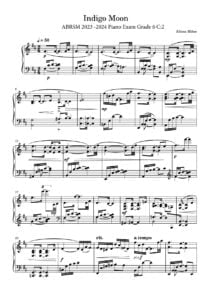 |
|
| ABRSM Piano Exam 2023-24 Jester’s Jig by Chee-Hwa Tan |
 |
|
| ABRSM Piano Exam 2023-24 Love Theme by Catherine Rollin |
 |
|
| ABRSM Piano Exam 2023-24 Minuet In G (Anonymous) |
 |
|
| ABRSM Piano Exam 2023-24 The Song Of Twilight by Yoshinao Nakada |
 |
|
| ABRSM Piano Exam Pieces Grade 1 2013 & 2014 syllabus |
 |
ABRSM Piano Exam Pieces Grade 1 2013 & 2014 syllabus |
| ABRSM Piano Exam Pieces Grade 1 2023 2024 |
 |
ABRSM Piano Exam Pieces Grade 1 2023 2024 |
| ABRSM Piano Exam Pieces Grade 1 2025 2026 |
 |
ABRSM Piano Exam Pieces Grade 1 2025 2026 |
| ABRSM Piano Exam Pieces Grade 2 2023 2024 |
 |
ABRSM Piano Exam Pieces Grade 2 2023 2024 |
| ABRSM Piano Exam Pieces Grade 3 2013 2014 |
 |
|
| ABRSM Piano Exam Pieces Grade 3 2023 2024 |
 |
ABRSM Piano Exam Pieces Grade 3 2023 2024 |
| ABRSM Piano Exam Pieces Grade 3 2025 2026 |
 |
ABRSM Piano Exam Pieces Grade 3 2025 2026 |
| ABRSM Piano Exam Pieces Grade 4 2021 2022 |
 |
ABRSM Piano Exam Pieces Grade 4 2021 2022 |
| ABRSM Piano Exam Pieces Grade 4 2023 2024 |
 |
|
| ABRSM Piano Exam Pieces Grade 5 2023 2024 |
 |
ABRSM Piano Exam Pieces Grade 5 2023 2024 |
| ABRSM Piano Exam Pieces Grade 6 2023 2024 |
 |
ABRSM Piano Exam Pieces Grade 6 2023 2024 |
| ABRSM Piano Exam Pieces Grade 7 2023 2024 |
 |
ABRSM Piano Exam Pieces Grade 7 2023 2024 |
| ABRSM Piano Exam Pieces Grade 8 2023 2024 |
 |
ABRSM Piano Exam Pieces Grade 8 2023 2024 |
| ABRSM Piano Exam Pieces Grade 8 2025 2026 |
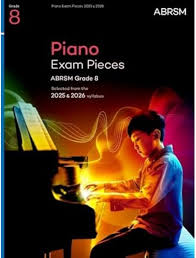 |
ABRSM Piano Exam Pieces Grade 8 2025 2026 |
| ABRSM Piano Mix 3 for Easy Piano Grades 3-4 |
 |
ABRSM Piano Mix 3 for Easy Piano Grades 3-4 |
| ABRSM Piano Prep Test |
 |
|
| ABRSM Piano Scales And Arpeggios from 2021 Guide For Practical Grades |
 |
|
| ABRSM Selected Piano Exam 2011 2012 Grade 1 |
 |
|
| ABRSM Selected Piano Exam Grade 2 (2011 2012 ) |
 |
|
| ABRSM Specimen Aural Tests Grade 1 to 3 |
 |
|
| ABRSM Specimen Aural Tests Grade 4 & 5 |
 |
|
| ABRSM Teaching notes on piano exam pieces (2013 & 2014) |
 |
|
| ABRSM The Manual Of Scales Broken Chords And Arpeggios For Piano |
 |
|
| ABRSM Theory of Music Exams Grade 8 (The Associated Board of Royal Schools of Music) 2010 |
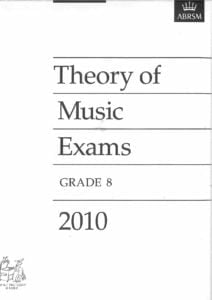 |
|
| AC/DC – Classic – Early Years – High Voltage And Let There Be Rock (Guitar Tab Songbook) |
 |
ACDC – Classic – Early Years – High Voltage And Let There Be Rock |
| AC/DC – Jam With AC/DC (PDF with MP3 audio tracks Guitar Tab Songbook) |
 |
Jam With ACDC |
| AC/DC Rock Score |
 |
|
| AC/DC, Best of (Guitar & Tablature) |
 |
Best Of ACDC (Guitar) |
| Ace Of Base – Beautiful Life | ||
| Ace Of Base – Dont Turn Around | ||
| Ace Of Base – Living In Danger | ||
| Acoustic 33 TOP Guitar Hits (Guitar Songbook) with Tablature – sheet music |
 |
Acoustic 33 TOP Guitar Hits (Guitar Songbook) – sheet music |
| Acoustic Blues Guitar By Kenny Sultan Guitar Tab |
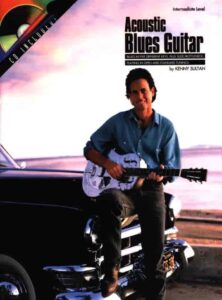 |
Acoustic Blues Guitar |
| Acoustic Blues Guitar Keith Wyatt with TABs |
 |
Acoustic Blues Guitar Keith Wyatt with TABs |
| Acoustic Blues Guitar Styles (Larry Sandberg) (with Tablature) |
 |
Acoustic Blues Guitar Styles (Larry Sandberg) |
| Acoustic Classics 42 songs Piano Vocal Guitar |
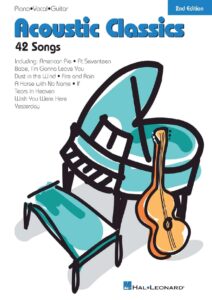 |
Acoustic Classics 42 songs Piano Vocal Guitar |
| Acoustic Guitar Bible (35 great songs) Guitar with TABs |
 |
Acoustic Guitar Bible (35 great songs) Guitar with TABs |
| Acoustic Rock (Guitar) Rolling Stones, Green Day, Pink Floyd, Bob Dylan (Songbook Guitar Tab) with Tablature |
 |
|
| Acoustic Rock 90’s, Best of – Guitar with Tablature |
 |
Acoustic Rock 90’s, Best of – Guitar |
| Acqua azzurra acqua chiara (Battisti) | ||
| Ad Te Levavi (Musescore File).mscz | ||
| Adagio (Lara Fabian) | ||
| Adagio MP3.zip | ||
| Adah’s Theme (La femme avec les yeux lumineux) Sex and the City |
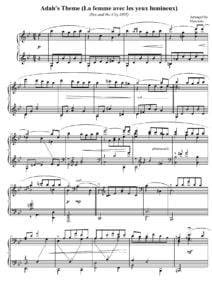 |
|
| Adah’s Theme (Le femme avec les yeux lumineux) Sex and the Cit | ||
| Adam – Adolphe Charles Holy Night Cantique-Nöel |
 |
|
| Adam – Cantique de Nöel Minuit Chretiens | Adam – Cantique de Noel Minuit Chretiens VS | |
| Adam – Derniers souvenirs d’un musicien |
 |
|
| Adam – O Holy Night | Adam – O Holy Night | |
| Adam – Souvenirs d’un musicien |
 |
|
| Adam (Cappeau) – Cantique de Noël. Easy Piano with voice or instrument (Paroles and lyrics) |
 |
Adam-Cappeau-Cantique-de-Noel- |
| Adam (Cappeau) – Cantique de Noel. Easy Piano with voice or instrument.mscz | ||
| Adam Cantique de Nöel Christmas song | Adam Cantique de noel | |
| Adam Carse – The History Of Orchestration Adam Carse |
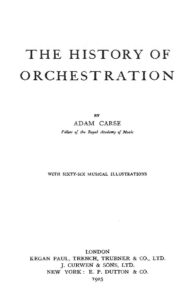 |
|
| Addams Family Theme (Musescore File).mscz | ||
| Addams Family Theme (Easy Piano) |
 |
|
| Addio Colonnello (Ennio Morricone) | ||
| Adele Songs from the Album 21 For SATB, SSA and Piano |
 |
Adele Songs from the Album 21 |
| Adele – 21 |
 |
ADELE 21 SONGBOOK |
| Adele – Chasing Pavements Piano Vocal guitar chords |
 |
|
| Adele – Easy on me (Piano solo with lyrics) |
 |
|
| Adele – Rolling in the Deep |
 |
|
| Adele – Rumor Has It |
 |
|
| Adele – Set Fire to the Rain |
 |
|
| Adele – Set Fire To The Rain (2) (Musescore File).mscz | ||
| Adele – Someone Like You | Adele – Someone Like You | |
| Adele – Someone Like You easy piano |
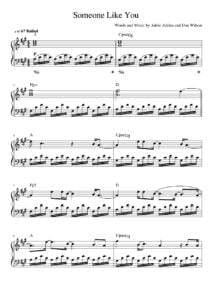 |
|
| Adele – The Best Of SongBook (12 songs arranged for easy piano) |
 |
Adele – The Best Of SongBook (12 songs arranged for easy piano) |
| Adele 19 [Piano, Guitar, Vocals] |
 |
Adele 19 [Piano, Guitar, Vocals] |
| Adele 25 Songbook |
 |
Adele 25 Songbook Contents —  |
| Adele Best Of Adele Big Note Piano (Adele Adkins) |
 |
Adele Best Of Adele Big Note Piano (Adele Adkins) |
| Adele Easy On Me Sheet Music |
 |
|
| Adele Original Keys For Singers (Adele) |
 |
Adele Original Keys For Singers (Adele) |
| Adele Skyfall (Piano Vocal Guitar Chords) | Adele Skyfall (Piano Vocal Guitar Chords) | |
| Adios Amor – Goodbye My Love as recorded by José Feliciano |
 |
|
| Adult All In One Course Level 1 With Audio Mp3 (Willard Palmer) |
 |
Lessons Alfred’s Basic Adult Piano Course Level 1 |
| Adult All In One Course Level 2 With Audio Mp3 (Willard Palmer) |
 |
Willard Palmer – Adult All-In-One Course Level 2 |
| Adult Greatest Movie Hits Piano Level 1 |
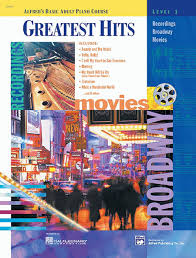 |
Adult Greatest Movie Hits Piano Level 1 |
| Adult Piano Adventures ALL-IN-ONE PIANO COURSE 1 |
 |
|
| Adult Piano Adventures All-In-One Piano Course Book 2 Book With Media Online (Nancy Faber, Randall Faber) Sheet Music |
 |
|
| Adult Piano Adventures Christmas – Book 1 (Nancy Faber Randall Faber) |
 |
|
| Adult Piano Adventures Christmas – Book 2 |
 |
Adult Piano Adventures Christmas – Book 2 |
| Adult Piano Adventures Popular Book 1 – Timeless Hits and Popular Favorites (Adult Piano Adventures Popular) |
 |
Adult Piano Adventures Popular Book 1 – Timeless Hits and Popular Favorites (Adult Piano Adventures Popular) |
| Adult Piano Course Greatest Movie Hits Piano Level 1 Recordings Broadway Movies |
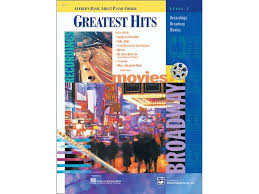 |
Adult Piano Course Greatest Movie Hits Piano Level 1 Recordings Broadway Movies |
| Advanced Harmonic Concepts by Wayne Naus (with audio MP3) |
 |
Advanced Harmonic Concepts by Wayne Naus |
| Advanced Harmonic Exercises For Jazz Piano |
 |
advanced harmonic exercises |
| Advanced Piano Solos 1 Encyclopedia by Tom Roed |
 |
Advanced Piano Solos 1 Encyclopedia by Tom Roed |
| Advanced Piano Solos 2 Complete by Tom Roed |
 |
Advanced Piano Solos 2 Complete by Tom Roed |
| Advanced Sacred Music Piano Solos by John Kraus |
 |
|
| Advanced Scale Concepts and Licks for Guitar (PDF + MP3 audio tracks Play Along) with Tablature |
 |
 |
| Aebersold – 110 – When I fall In Love – Romantic Ballads pdf with embedded audio MP3 Tracks |
 |
Jazz Play Along Vol 110 [When i Fall in Love] |
| Aebersold – 113 Embraceable You – Vocal Standards with audio MP3 Tracks |
 |
Jamey Aebersold – Vol 113 |
| Aebersold – 30 blues scale By Jamey Aebersold | Aebersold – 30 blues scale By Jamey Aebersold | |
| Aebersold – A New Approach To Jazz Improvisation Gettin’it together vol. 21 |
 |
aebersold gettin all together vol 21 |
| Aebersold – Practice Procedures For Memorizing Scales And Chords | Aebersold – Practice Procedures For Memorizing Scales And Chords | |
| Aebersold – Rapid Reference Vol 1-114 | Aebersold – Rapid Reference Vol 1-114 | |
| Aebersold – Vol 01 – How to Play and Improvise Jazz (with audio MP3) |
 |
Aebersold – Vol 01 – How to Play and Improvise Jazz |
| Aebersold – Vol 03 – The II-V7-I Progression Jazz Play Along Book + Audio Mp3 |
 |
|
| Aebersold – Vol 105 – Dave Brubeck Jazz Play Along Book + Audio Mp3 |
 |
|
| Aebersold – Vol 118 – [Groovin Jazz] (with audio MP3) |
 |
|
| Aebersold – Vol 32 – Ballads Jazz Play Along Book + Audio Mp3 |
 |
|
| Aebersold – Vol 34 – Jam Session Jazz Play Along Book + Audio Mp3 |
 |
Includes MP3 Play along themes as Blue moon, The shadow of your smile, Over the rainbow, etc. |
| Aebersold – Vol 45 – [Bill Evans] Jazz Play Along Book + Audio Mp3 |
 |
Aebersold – Vol 45 – [Bill Evans] |
| Aebersold – Vol 58 – Unforgettable Standards Jazz Play Along Book + Audio Mp3 |
 |
aebersold unforgettable standards sheet music |
| Aebersold – Vol 76 – David Baker – How To Learn Tunes (A Jazz Musician’s Survival Guide) |
 |
how to learn tunes |
| Aebersold 25 How To Practice By Jamey Aebersold | Aebersold 25 | |
| Aebersold Antonio Carlos Jobim Vol 98 – Bossa Nova Songbook Jazz Play Along Book + Audio Mp3 |
 |
Aebersold Antonio Carlos Jobim Vol 98 – Bossa Nova Songbook |
| Aebersold Anyone Can Improvise – 52 Points To Remember | Aebersold Anyone Can Improvise – 52 Points To Remember | |
| Aebersold Jazz EAR training (with audio MP3) |
 |
Aebersold Jazz EAR train |
| Aebersold Jazz Handbook 09 Tips For Learning A New Tune & Practice Procedures For Memorizing |
 |
Aebersold Jazz HANDBOOK |
| Aebersold Jazz Play-Along Books & audio MP3 1st Part Full Collection – Vol 1- 40 (with MP3) for all instruments |
Compressed file  Aebersold Full Collection Part 1 – Vol 1- 40 Aebersold Full Collection Part 1 – Vol 1- 40 |
40 volumes with MP3 Aebersold Book Index Vol.001-106 |
| Aebersold Jazz Play-Along Books & audio MP3 2nd Part Full collection Vol 41- 75 for all instruments | Compressed fileAebersold Full Collection Part 2 – Vol 41- 75.. | 35 volumes with MP3 Aebersold Book Index Vol.001-106 |
| Aebersold Jazz Play-Along Books & audio MP3 3rd Part Full Collection – Vol 76- 112 (with MP3) | Compressed fileAebersold Full Collection Part 3 – Vol 76- 112 | 37 volumes with MP3 Aebersold Book Index Vol.001-106 |
